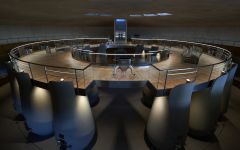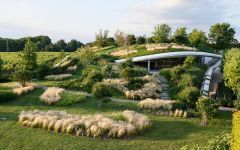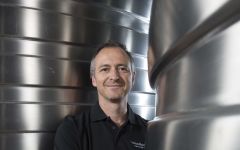Chateau Haut-Bailly (Futures Pre-Sale) 2021
-
James
Suckling - Decanter
-
Robert
Parker -
Jeb
Dunnuck



Product Details
Your Rating
Somm Note
Winemaker Notes
Professional Ratings
-
James Suckling
Lots of graphite and crushed-stone character with redcurrants and pine needles. Medium body with silky and layered tannins. Pretty balance and elegance.
Barrel Sample: 95-96 -
Decanter
Seductive blackcurrant and juniper with purple floral touches on the nose. Smooth texture with high acidity giving sharp strawberry fruit balanced by both savoury and mineral touches - slate, crushed stone, smoke, violets and dark chocolate - very much in the style of the vintage with no harshness or overt opulence but instead gives a pure sense of classicism, restraint and refinement. Elegant and well structured with a long determined finish - this will continue to deliver pleasure for a long time. 10% press wine. No chaptalisation. 30% grand vin. 3.9pH. 3% Cabernet Franc completes the blend. Yield 19hl/ha. First year in the new cellar.
Barrel Sample: 95 -
Robert Parker's Wine Advocate
The 2021 Haut-Bailly, a blend of 65% Cabernet Sauvignon, 22% Merlot, 10% Petit Verdot and 3% Cabernet Franc, reveals a complex, brooding bouquet with aromas of blackcurrant, spices, plums, spring flowers and smoke. Medium to full-bodied, it’s a lively, rather muscular wine with a fleshy, dense core of fruit, tangy acids and powdery tannins. Despite its firm character, I like its overall balance. It should age gracefully over the next 10 years.
-
Jeb Dunnuck
The 2021 Château Haut-Bailly is a beautiful, elegant wine that's very much in the style of the estate with its charming, supple, seamless profile. Red and black currants, smoke tobacco, spice, and subtle flower nuances all define this utterly classic, seamless Haut-Bailly. Coming from minuscule yields of 19 hectoliters per hectare, it will drink well for at least 20 years.
Other Vintages
2022-
Jeb
Dunnuck -
James
Suckling -
Robert
Parker - Decanter
-
James
Suckling -
Jeb
Dunnuck -
Wine
Enthusiast -
Robert
Parker -
Wine
Spectator - Decanter
-
James
Suckling -
Wilfred
Wong -
Wine
Enthusiast - Decanter
-
Jeb
Dunnuck -
Robert
Parker
-
James
Suckling -
Jeb
Dunnuck - Decanter
-
Wine
Enthusiast -
Robert
Parker -
Wine
Spectator
-
Robert
Parker - Decanter
-
Wine
Enthusiast -
James
Suckling -
Jeb
Dunnuck -
Wine
Spectator
-
James
Suckling -
Robert
Parker - Decanter
-
Jeb
Dunnuck -
Wine
Enthusiast -
Wine
Spectator -
Connoisseurs'
Guide
-
James
Suckling -
Jeb
Dunnuck - Decanter
-
Robert
Parker -
Wine
Enthusiast -
Wine
Spectator
-
Wilfred
Wong -
Wine
Enthusiast -
James
Suckling -
Jeb
Dunnuck - Decanter
-
Wine
Spectator -
Robert
Parker
-
Jeb
Dunnuck -
Wilfred
Wong -
Wine
Enthusiast -
James
Suckling -
Robert
Parker -
Wine
Spectator
-
Wine
Enthusiast - Decanter
-
James
Suckling -
Robert
Parker -
Jeb
Dunnuck -
Wine
Spectator
- Decanter
-
Jeb
Dunnuck -
James
Suckling -
Wilfred
Wong -
Wine
Enthusiast -
Wine
Spectator -
Robert
Parker
-
Jeb
Dunnuck -
Robert
Parker - Decanter
-
James
Suckling -
Wine
Enthusiast -
Wine
Spectator
-
Robert
Parker - Decanter
-
Jeb
Dunnuck -
Wine
Enthusiast -
James
Suckling -
Wine
Spectator
- Decanter
-
Robert
Parker -
Wine
Spectator -
Jeb
Dunnuck
-
Jeb
Dunnuck - Decanter
-
Wine
Spectator -
Robert
Parker -
James
Suckling -
Wine
Enthusiast -
Connoisseurs'
Guide
- Decanter
-
Robert
Parker -
Wine
Enthusiast -
Jeb
Dunnuck -
Wine &
Spirits -
Wine
Spectator -
James
Suckling
-
James
Suckling - Decanter
-
Jeb
Dunnuck -
Robert
Parker
- Decanter
-
Jeb
Dunnuck -
Robert
Parker







The vineyard of Haut-Bailly as we know it today began to take shape when the Goyanèche and then the Daitze family acquired and unified the best vine growing plots in the 1530s. The estate remained in the Daitze Family until 1630 when it was purchased by Firmin Le Bailly and Nicolas de Leuvarde, wealthy Parisian bankers and lovers of Graves wines.
Following substantial investments, the property continued to be passed down the Bailly family line until 1736, when Irishman Thomas Barton took the helm. His strong business network allowed him to spread word about the quality of Chateau Haut-Bailly at a time when French ‘claret' was beginning its rise to stardom in England and Ireland.
Throughout the 18th century powerful, well-connected and ambitious owners drove Haut-Bailly to new heights, including Christophe Lafaurie de Monbadon and his son Laurent who went on to become Mayor of Bordeaux in 1805.
In 1872, Alcide Bellot des Minières acquired the estate and constructed the imposing, stone chateau building that remains to this day. He pioneered a precise, science-driven approach to viticulture, becoming a figure of legend widely known as the 'King of Vintners'. Thanks to Alcide's incredible drive, Haut-Bailly experienced a remarkable golden age, commanding the same prices as the First Growths: Lafite, Latour, Margaux and Haut-Brion.
The purchase of Haut-Bailly in 1955 by Daniel Sanders, a Belgian negociant, opened up a new era. Daniel and his son, Jean, recomposed the vineyard, renovated the winery and took pains to select only grapes from the best vines for their grand vin. They succeeded in giving the wines a unique style and reputation, and Haut-Bailly recovered its image as a great wine on the international marketplace.
In July 1998 Chateau Haut-Bailly was purchased by American Robert G. Wilmers, chairman and CEO of the M&T Bank based in Buffalo, New York. A lifelong lover of Bordeaux Grands Crus, Bob was behind every strategic decision, ensuring that Haut-Bailly followed a path of progression and continuity whilst remaining ever-respectful of its heritage.
After Mr. Wilmers purchased the property, he first asked Jean Sanders to stay on board, and then Véronique Sanders, fourth generation, to serve as general manager, overseeing a far-reaching investment programme to modernise the vineyards, cellars, offices, and chateau itself.
For Bob and his wife Elisabeth, Haut-Bailly went well beyond a financial investment: it was a joint passion. Following the sad passing of Bob in December 2017, his family has taken over and will continue in his footsteps. Together with the management team, they are committed to continuing Bob’s work in the same spirit and energy as in the past twenty years. The many recently initiated and future projects will be pursued.
With the 2021 vintage, Chateau Haut-Bailly debuted a contemporary, custom-built winery which was completed at the end of 2020. The building allows them to carry out precision work in optimal conditions thanks to the space, natural light and technical innovation which are at the heart of the project.
